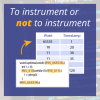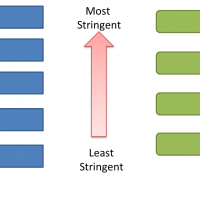Automotive software development is a growth area in the global automotive industry. So what are some of the major trends in automotive software development and what do you need to know about them?
- Advanced Driver Assistance Systems (ADAS) including navigation and collision avoidance features: their growth may be partly driven by the arrival of ISO 26262 – the theory being ‘now it’s obvious how to do safety in automotive’. One recent estimate predicted 26% growth in this area over a five-year period (Ian Riches of Strategy Analytics).
- ECU consolidation is another major trend. The presence of virtualization, hyperkernels and multicore systems will provide an opportunity to reduce the number of ECUs in cars, which presently exceeds one hundred in some vehicles. This does represent a great opportunity for embedded companies to sell sophisticated RTOS solutions (Green Hills and Wind River, for example) to ECU vendors, which hasn’t previously been an option for the main powertrain/chassis/body ECUs.
- Using MATLAB® Simulink® models rather than C code: David Price, CTO of Pi Innovo and Peter Van Manen, Managing Director of McLaren Electronic Systems have both talked about the development of applications at the level of MATLAB Simulink models. In the case of Pi Innovo, they are wanting to supply the API to their OBD (On-Board Diagnostics) package at the Simulink level rather than as C code it would be interesting to see if more suppliers are prepared to provide their APIs as Simulink libraries, rather than C libraries.
- ISO 26262 is gaining momentum – the next big unknown is how exactly to apply it. Projects like VeTeSS will help with this.
Thanks to everyone at AAE 2012, where I picked this information up from the many excellent presentations. They are fairly representative of what’s important in automotive software development at the moment. Are there any other trends we need to know about?
MATLAB® and Simulink® are registered trademarks of The MathWorks, Inc. See mathworks.com/trademarks for a list of additional trademarks.

 Rapita System Announces New Distribution Partnership with COONTEC
Rapita System Announces New Distribution Partnership with COONTEC
 Rapita partners with Asterios Technologies to deliver solutions in multicore certification
Rapita partners with Asterios Technologies to deliver solutions in multicore certification
 SAIF Autonomy to use RVS to verify their groundbreaking AI platform
SAIF Autonomy to use RVS to verify their groundbreaking AI platform
 How to measure stack usage through stack painting with RapiTest
How to measure stack usage through stack painting with RapiTest
 What does AMACC Rev B mean for multicore certification?
What does AMACC Rev B mean for multicore certification?
 How emulation can reduce avionics verification costs: Sim68020
How emulation can reduce avionics verification costs: Sim68020
 Multicore timing analysis: to instrument or not to instrument
Multicore timing analysis: to instrument or not to instrument
 How to achieve multicore DO-178C certification with Rapita Systems
How to achieve multicore DO-178C certification with Rapita Systems
 How to achieve DO-178C certification with Rapita Systems
How to achieve DO-178C certification with Rapita Systems
 Certifying Unmanned Aircraft Systems
Certifying Unmanned Aircraft Systems
 DO-278A Guidance: Introduction to RTCA DO-278 approval
DO-278A Guidance: Introduction to RTCA DO-278 approval
 HISC 2025
HISC 2025


















